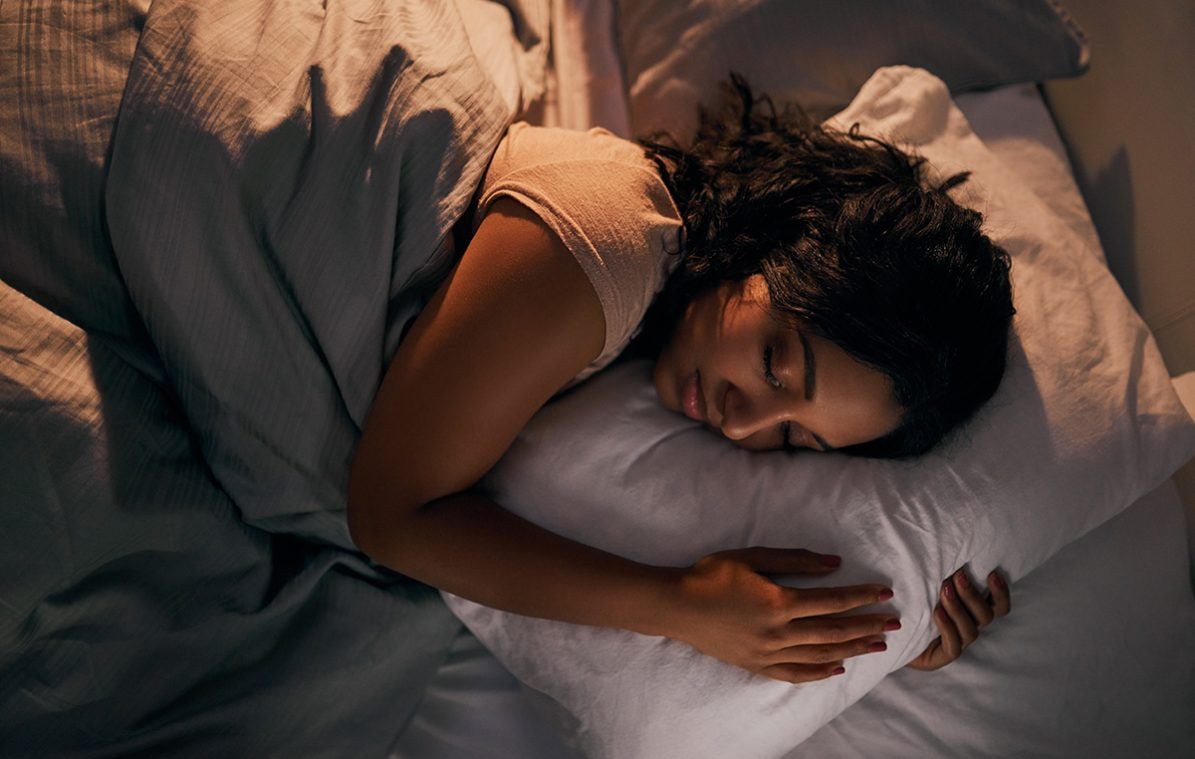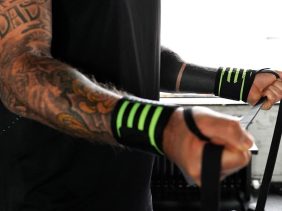5 Surprising Tips That Make You Fall Asleep Faster
 ©Adene Sanchez
©Adene Sanchez
Lights out, eyes closed, and he’s away – my friend has an enviable routine for getting off to asleep. Until recently, I, on the other hand, would toss and turn for at least half an hour before laboriously drifting into a deep sleep. The five methods that I’d like to present in this article proved to be an absolute game-changer. Since I first started to use them, I’ve been fast asleep within minutes!
Why do many people find it so difficult to fall asleep in the first place? Besides screentime in the bedroom, poor air or too much light or ambient noise, the biggest obstacles are stress and worry. Do you find that your mind suddenly starts racing as soon as you close your eyes? I often find myself going over conversations I’ve had during the day, running through my to-do list for tomorrow or spiraling through various worst-case scenarios. All this keeps me awake – five minutes, fifteen minutes, sometimes even several hours. The problem is that a lack of sleep increases your stress levels, which in turn makes it even harder for you to rest. It’s high time to break the cycle with these five ingenious methods for falling asleep:
#1 Fall asleep quickly with body scan meditation
People often associate meditation with hours spent sitting cross-legged in an effort to attain enlightenment. But meditation is so much more than that: it can even help you fall asleep. The body scan method is great for this. The aim is to consciously perceive the body’s sensations and signals, helping you to come to rest.
Here’s how to do it: lie comfortably in bed and close your eyes. Now go over your entire body, one area at a time. Start with your feet: focus on your soles, your toes, your ankles, then move up from there through your legs and pelvis to your abdomen, and so on. Essentially, you embark on a kind of journey through your body. Consciously notice each area while breathing deeply in and out. Usually I don’t even make it to my torso before I fall asleep.
#2 Active unwinding through progressive muscle relaxation
For anyone who leads a stressful life and is still physically tense even in bed, progressive muscle relaxation (PMR for short) is a useful aid to falling asleep. This active relaxation technique has been around since the 1930s.
Here’s how to do it: lie in bed and tense all of the muscles in your body, from your feet to your jaw. Hold the tension for a few seconds, then release it completely. Do the whole thing again. Alternating between tension and relaxation can relieve tension and alleviate the symptoms of stress, so you can unwind better and fall asleep faster.
A strenuous workout can also make for prolonged tension and cause muscle pain that robs you of sleep. Boost your recovery with a balanced diet, regular mobility training and our Recovery Aminos!
#3 Reduce stress with the 5-6-8 breathing technique
After a stressful day, we tend to breathe quickly even when we’ve gone to bed for the night. This kind of shallow breathing increases the release of stress hormones that keep us awake. 5-6-8 breathing is an effective method of reducing stress and falling asleep relaxed within a few minutes.
Here’s how to do it: lie on your back and place one hand on your stomach. Inhale deeply through your nose while counting to five. When your abdominal wall is as far out as it can go, hold your breath. Count to six. Exhale slowly while you count to eight. With each repetition you will feel your body and mind becoming calmer.
#4 Journaling to stop those worries in bed
You want to fall asleep quickly, you’re absolutely exhausted, yet you can’t stop tossing and turning. You have a kind of cinema reel playing in your head, with your money worries, relationship problems and work stress running through your imagination in an endless loop. To get rid of these negative thoughts, it helps to write them down before you go to sleep.
Here’s how to do it: make it your regular evening routine to write in your journal for at least ten minutes before going to bed. Put your fears and worries, anger, disappointment and frustration down on paper. Everything that’s preoccupying you can come out here. Try not to hold anything back! The freer your mind, the faster you’ll be able to fall asleep.
See here for more positive evening routines that can improve your sleep.
#5 Fall asleep faster with gentle distraction
The longer you lie there awake, the more annoyed you get: how long are you going to keep tossing and turning like this? As a rule of thumb, if you haven’t fallen asleep within fifteen to twenty minutes, get up again and engage in a relaxing activity. The more boring, the better! In other words, don’t sit down at your desk, and definitely don’t turn on the TV.
You could fold laundry, arrange your tea selection or plump up the cushions on the sofa. Or you could listen to a bedtime story or read a book that isn’t too gripping. Within half an hour, your eyelids should start to feel heavy and you can snuggle back in bed. And if not, just try one of the other methods. Falling asleep shouldn’t be a problem for you now!
More things to know from foodspring:
Sources for this article
We at foodspring use only high-quality sources, including peer-reviewed studies, to support the facts within our articles. Read our editorial policy to learn more about how we fact-check and keep our content accurate, reliable, and trustworthy.






















